#irish pagan
Text
pro deity worship/low energy tip:
you CAN watch tv with/for your deities! and devote it to Them! and use that devoted time as an offering!
your offerings don’t exclusively HAVE to be physical or even only “things that would have been offered at the inception of the religion”. quality time is an offering. and TV (or movies!) can be quality time. as someone who is autistic/disabled, sometimes that’s all I can give (and I’m biased in that TV is my special interest, lol.)
examples:
for The Morrigan, I watch shows about killers, mediums, ghosts, and powerful groups of women. if I’m watching movies, I lean towards Irish horror movies or movies about spirits. sometimes just general dark fantasy movies. examples include Practical Magic (movie), The Hallow (movie), Hannibal (movie series or show but especially show), Psychic Kids* (reality show)
for Hermes, I watch things that are both funny and interesting/educational/informative. if I’m watching movies, I lean towards comedy romps (especially that involve travel) or biopics. examples include We Are The Millers (movie), Rocketman (biopic movie), Hart to Heart (comedy/interview show), Jeopardy!* (educational game show)
for Hades, I watch any and all horror movies, especially those with an afterlife component. if I’m watching shows, I tend to lean towards dark/kooky spooky cartoons. examples include Beetlejuice (movie or show but especially movie), The Cleansing Hour (movie), The Grim Adventures of Billy and Mandy (cartoon show), Courage the Cowardly Dog* (cartoon show)
for Persephone, I tend to watch anything old, spooky, heartfelt, and aesthetically beautiful. if I’m watching movies, I lean towards dark musical films or romantic movies with a horror twist (bonus points for horror, comedy, and romance all in one). examples include Deathgasm (movie), The Corpse Bride (cartoon musical movie), Elvira’s Movie Macabre (horror movie commentary show), The Munsters* (show)
I put a * next to the programs that I feel They’ve loved the most and have felt truly deep connection with Them over! please feel free to get weird with it, experiment, find what works for your worship. and maybe in the reblogs or tags, tell me what you’ve been watching and who you’ve been watching it with!
#the wolf speaks#paganblr#pagan#paganism#eclectic paganism#helpol#hellenic paganism#hellenic pagan#hellenic polytheism#polytheism#irish paganism#celtic paganism#irish pagan#celtic pagan#the morrigan#hades#persephone#hermes#the morrigan deity#hades deity#persephone deity#hermes deity
245 notes
·
View notes
Text
Current brainworm, none of the Celtic cultures' creation myths have survived, even though they almost certainly had one. The closest we have is the Lebor Gabala Erenn from Irish mythology, but it isn't a creation story, it records the various settlements of Ireland, ending in the Gaels. However, it is thought that there are reflections of an earlier creation myth in the LGE and in the Tain, and there are similar themes that validate that the Gaels at least viewed the creation of the landscape in this way from various other stories. Additionally, we can compare other Indo-European creation myths to figure out what elements the Gaelic creation myth almost certainly would have had. These include:
Before creation, there is a void of some kind
In that void, fire interacts with water/ice to create the first life
A primordial bovine, most likely a cow (bulls were more common in IE cultures that emphasized pastoralism over crops. The Romans had a she-wolf, because they had to be edge lords)
One primordial being or possibly a set of twins who are sustained by the milk of the cow
One of the twins/the primordial being is dismembered to create the physical world
So already we have the makings of a general creation story, and if you're familiar with Norse mythologies, you might recognize it. In fact, it's thought that the Norse creation myth has retained the most elements of the original IE myth
However, scholars point out that the primordial being that is killed is called *Yemo, meaning "twin", which means there was likely originally two first beings. In the one sacrificing the other, the act renders the brother doing the sacrificing as the First Priest, who creates the concept of death, but in doing so turns that death into the living world. The sacrificed brother is then typically rendered as the First King and Ruler of the Land of the Dead. By setting up this order for the world, the First Priest establishes that life cannot exist without death (whether it be harvesting crops or butchering livestock), and typically, these myths continue and establish the role of the priests in society, who's job it is to ensure the continuity of the original sacrifice and maintain the living world
Now, here's where we get into my speculation;
I think it's likely that the Irish creation myth involved a set of twins. Off the top of my head, I think that possible reflections of this can be found in the brothers Amergin and Donn and in the Donn Cuailnge and Finnbhennach from the Táin. With Amergin and Donn, Donn insults the goddess of the land and is drowned. In doing so, Donn becomes a god of the dead and all the souls of the dead have to gather at or pass through Tech Duinn. Amergin however, secures the support of these goddesses and is able to go on and give order to the Gaelic rule of Ireland by deciding who will rule what and serves as the Chief Ollam (bard) of Ireland. In the Táin, after the main Plot has gone down, the Donn Cuailnge and Finnbhennach fight and the the Donn Cuailnge ends up killing Finnbhennach. As the Donn Cuailnge passes through the landscape, pieces of Finnbhennach drop off his horns and form/name part of the landscape. I think it's also interesting how in both these stories, one of the duo is explicitly associated with the color white (Amergin is called "white knees") and the other one is dark, but the opposite one dies first in the stories
Also, if we look at myths like the creation of the Shannon and the Boyne rivers, where in the goddesses Sionnan and Boann, respectively, die in the rivers' creations, we further see that the death of one figure to create an element of the landscape is a relatively common one, so a creation story similar to the one I hypothesize the Irish had wouldn't have been outside of pagan Irish belief
Additionally, if we look at the duíle, kind of like the Irish elements/natural features, we see that the nine elements/features are each explicitly associated with body parts. Stone is associated with bones, the sea with blood, the face with the sun, ect. I think this could be a call back to that earlier creation myth
Off the top of my head, that's what I've been mulling over. Idk, I might be completely off the mark, but if anyone wants give their thoughts, I'd love to hear them. I'm certainly not an expert in Irish mythology and there may be some key factor that completely sinks this idea
#Sword speaks#Irish mythology#Irish pagan#Irish polytheist#Celtic pagan#Celtic polytheist#creation myth#idk man my brain has been like a dog with a bone with this for days and I'm curious what others might think
234 notes
·
View notes
Text
Blackcrowing's Irish Pagan Festivals Master Post
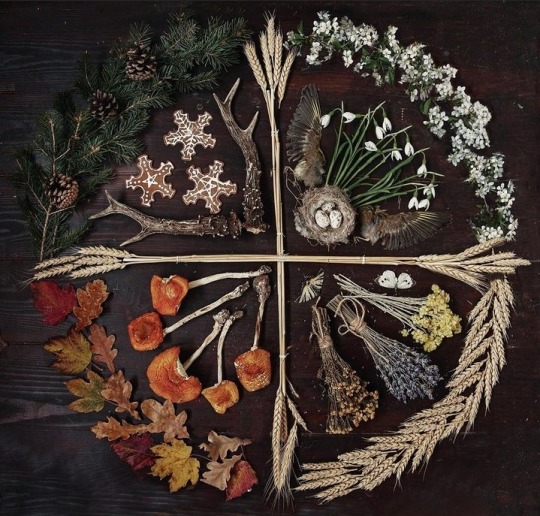
Samhain Festival
Samhain Authentic Foods
Imbolg Festival
Imbolg Authentic Foods
Bealtine Festival
Bealtine Authentic Foods
Lughnasadh Festival
Lughnasadh Authentic Foods
Art Credit - Familiar_flower
#lughnasa#lúnasa#lughnasadh#bealtaine#Baltaine#Beltane#imbolg#imbolc#fire festivals#fire festival#irish#irish mythology#irish polytheist#irish polytheism#irish pagan#irish paganism#irish reconstructionism#irish reconstructionist#celtic#celtic mythology#celtic pagan#celtic paganism#celtic polytheist#celtic polytheism#celtic reconstructionist#celtic reconstructionism#blackcrowing#samhain#pagan#paganism
175 notes
·
View notes
Text
Protecting home and fortune: Irish folk customs for Bealtaine
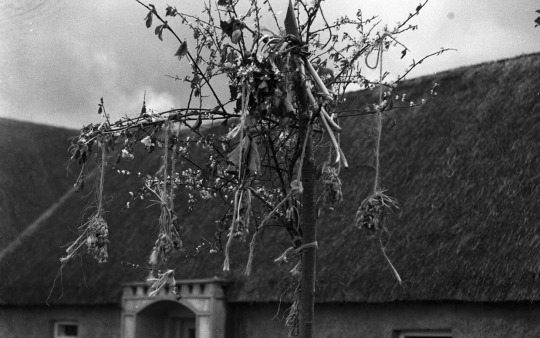
Bealtaine, also known as May Day, marked a pivotal point in the Irish calendar. It signified the arrival of summer, a time of light, warmth, and the promise of a bountiful season ahead. However, Bealtaine also held a sense of unease. This was a time when the boundary between our world and the Otherworld thinned, inviting the potential for both blessings and misfortune from the unpredictable Good Neighbors. To navigate this delicate balance, people turned to time-honored traditions and a heightened awareness of the risks of everyday life.
Appeasing the Good Neighbors
On Bealtaine, it was widely believed that the Good Neighbors became particularly active. To ensure their goodwill and prevent them from causing mischief, people would leave out food and drink as offerings. The belief was that the the Good Neighbors were attracted to these offerings and would be less likely to cause trouble if they were satisfied.
You all know May is the month of the fairies. Great people or men that lived long ago rises from their graves on every night in the month of May to fight the old battles that they fought long ago these men are called fairies. The bad fairies do great harm and trouble in the month of May they kill cattle take away milk and butter from the cows and alot of other mischief. Source
"The fairies come around our houses too to do mischief as well as they come to the cattle; you should sweep the hearth very clean and leave food aside for them. If you don't the fairies will come when you are asleep and will torment you by tricking you or pinching you." Source
Primrose
Primrose was believed to ward off the Good Neighbors, and scattering them in the doorways and window sills of the home created a barrier no troublesome spirit could cross.
"During the first three days [of May] fairies entered the house. They came disguised as old men or women in order to steal coals and in order to prevent them primroses were scattered on the doorway no fairy could pass this flower." Source
"The best preventive of fairy power was to scatter primroses on the threshold, for no one could pass the flowers and and the house and house-hold were left in peace." Source
"Guard the house by a string of primroses across the door on the first three days of May. The fairies can pass neither over nor under the string." Source
Rowan
This tree was seen as potent protection against otherworldly forces. A branch hung above a cow's stable door could ward off those who might steal the milk, ensuring the cow's blessing for the year. Branches decorated with spring flowers were also placed around the house for a bit of extra good luck.
On May Day before sunrise the eldest member of the family gets up, he goes out, pulls a branch of the rowan tree and hangs it over the cow's stable door. This is done to prevent the fairies from taking any of the milk from the cows. Source
Another custom is to get a branch of Rowan tree and decorate it with may flowers and primroses and leave it in the middin standing. Then strew may-flowers into each outhouse door and on the doorstep and in the windowsills. This is to welcome the good fairies so that there will be good luck round the year. Source
If you put a rowan tree up the Chimney nothing can bring the butter out of the house. Source
The May bush: blessing and protection
The May bush was a common custom in Ireland, particularly in Leinster, South and West Ulster, and some areas of Munster and Connaught. The May bush often featured hawthorn branches brought home and decorated with flowers, ribbons, and colorful eggshells saved from Easter.
The May bush was believed to protect the home from evil spirits, particularly fairies and witches. It was also thought to bring good luck and prosperity, especially in relation to milk and butter production.
It is a great custom also to make a May bush on May day. This consists of a bush, which is put standing in the dungpit. The bush is decorated with flowers and eggshells. The eggshells are kept after Easter Sunday. Source
On May morning a Maybush was placed outside each house. It usually was a yellow furze bush with a number of eggshells stuck on the thorns. Source
The people around this place make May-bushes on the first of May. They pull a bush and gather flowers and tie them on to the bush with strings and stick it on the ground and after that they say their prayers around it to honour our Blessed Mother and they make a little Altar and put flowers every day on it during May. The people long ago used to make May-bushes and they also used to make a little Altar. Source
The evening before the first of May the people go out and get a piece of a certain tree which they call May Pole. They put this bush outside the door and they put all the egg shells they had on Easter Sunday on it. They also put a lot of flowers out side too. If the people do not put up the May Pole the fairies will come. They also tie May Pole to the cow's tail and if they do not, the fairies come and take the milk from the cow. Source
Guarding your luck
Bealtaine is a time that came with a heightened fear that any careless act could invite bad luck for the whole year. During Bealtaine, even seemingly simple acts held risk.
Giving away even staples like milk, butter, or coins risked also surrendering your good fortune. Lending a tool or sharing even a hot coal from your hearth could lead to unexpected misfortune.
On May eve no one cares to give away any milk or butter fearing their luck would be taken. Source
Long ago the people used to have a large number of pisreogs on May day...They would not give away anything to anybody on May day, only to a beggar man. When he would come in they would give him great welcome. They would say he was bringing in the good luck. The old people would not allow anybody to bring fire outside the door. Everybody would have matches on May day. The old people would not allow any fire outside the door. Source
On May Eve or May Day nothing is given out of the house. Source
They considered it unlucky to give butter or milk way to any person on May Day as they would be giving away their luck. No stables were to be cleaned out on that day. The first person to go to the well in the morning was supposed to have luck for the rest of the year. It is not right to give money to anyone on that day. But if you get money on that day you will be getting it for the year. Source
The people of the house do not put out the ashes on that day or if a person asked for a coal they would be refused. Source
Another custom of the Irish, they would not lend any article or give either milk or food even to beggars. They would not light a fire on May Day until it was late in the day for fear that the people would see the smoke and would bring the butter. Source
The customs surrounding Bealtaine offer a fascinating glimpse into the rich tapestry of Irish folklore and the enduring human desire to shape our luck through ritual and tradition. Whether leaving offerings to appease unseen spirits, scattering flowers as wards against misfortune, or cautiously guarding their possessions, people sought to influence the unseen forces that shaped their lives. These traditions, born in a different time, speak to a fundamental human desire for control, for a sense of agency in the face of an uncertain world. While the specific fears and beliefs may have shifted, the impulse to use ritual and superstition as a means of navigating life's unpredictability remains surprisingly relatable.
#Bealtaine#beltane#may day#irish folklore#celtic paganism#irish paganism#irish pagan#pagan#paganism#witchcraft#witchblr
83 notes
·
View notes
Text
Pagan Wedding Flowers (and other plants) Cheat Sheet
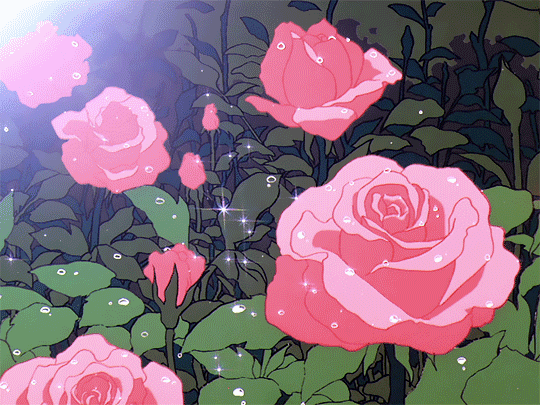
Flowers have been associated with weddings for almost as long as humans have been getting married. In fact, the use of flowers in ritual may actually be older than humans! Neanderthal graves in Iraq suggest that Neanderthals buried their dead with flowers. There are mentions of flowers in our earliest recorded accounts of weddings, such as in Egypt, Greece, and Rome.
Historically, couples would have used whatever flowers were available to them. While some cultures had flowers they preferred for weddings because of their symbolism, couples would have been limited by what grew in their area and by what was in bloom at the time of their ceremony. To be truly as historically accurate as possible, consider using flowers you grew or foraged yourself. Bonus points for native blooms!
For those who aren't into growing or gathering your own wedding flowers, modern florists and greenhouses allow us to choose from a wide range of flowers, many of which aren't native to our homes. This makes it much easier to choose flowers based on their symbolism, history, or cultural meaning.
Historic Wedding Flowers + Plants
Roses have been the flower of choice for Western weddings pretty much forever, and with good reason. The rose is associated with several ancient goddesses of sex, fertility, and/or romance, such as Inanna, Ishtar, Aphrodite, and Venus. (Later, medieval Christians would also associate this flower with the Virgin Mary.) Including the goddess's flowers in a wedding may have been a way of invoking her blessing on the union. Sappho called rose "Queen of the Flowers."
Roses are held in a high regard in pretty much every culture with access to them. They're strongly associated not only with love, but also with beauty, wholeness, blessings, and even spirituality.
Rose was included in wedding celebrations in Ancient Hellos (Greece) and Rome. It is associated with the planet Venus and the water element.
Wheat was also a popular inclusion in weddings in ancient Greece and Rome. Hellenic brides would carry sheaths of wheat or another grain to invoke fertility and good fortune. Wheat was strongly associated with agrarian goddesses like Demeter, Persephone, Ceres, and Proserpina. Carrying wheat may also have been a way of expressing a wish for the marriage to produce many children. Pliny the Elder explicitly says in his Natural History that wheat was included in weddings to honor Ceres.
In modern occult systems, wheat is associated with fertility, the conception of children, and wealth. It is associated with the planet Venus and the element of earth.
Olive branches also featured in Hellenic weddings. Olive was an important crop in the ancient Mediterranean, and olive branches were a symbol of peace and friendship. Olive was also used in the victors' crowns in the Olympic Games. In Athens, the olive tree was a symbol of Athena. It was also carried by worshipers of Apollo when they visited the Oracle at Delphi. Olive was also important to the Romans, who associated it with Mars in his aspect as a protector of peace.
In modern magic traditions, olive is associated with beauty, healing, stamina, wealth, fertility, protection and of course, peace. It is associated with the sun and the fire element.
Orange blossoms were included in Hellenic weddings as a sign of happiness. These strongly scented white flowers also sometimes appeared in Roman weddings. Thousands of years later, Queen Victoria wore a crown of orange blossoms at her wedding, but for her they were a symbol of chastity.
In modern systems, orange is associated with joy, partnership, sweetness, and good luck. It is associated with the sun and the fire element.
Hawthorn appeared in weddings in ancient Rome. Pliny the Elder said that Roman bridal processions included a hawthorn torch dedicated to the goddess Ceres. In Rome, hawthorn was more generally associated with love and good luck.
In Celtic cultures, especially Ireland, hawthorn was believed to be a fairy tree. For this reason, cutting a hawthorn tree or bringing hawthorn branches inside was considered bad luck.
The blooming of hawthorn trees was used to determine the date of Bealtaine, and hawthorn boughs were often decorated with flowers, ribbons, and egg shells to make a May bush, which was placed by the front door for good luck. In Britain, hawthorn wood was used to carve maypoles. Hawthorn flowers may be especially appropriate for a May wedding or handfasting.
In modern occultism, hawthorn is associated with protection, healing (especially healing the heart), romantic love, fertility, granting wishes, and happiness. It is still strongly associated with weddings and marriage. It is associated with the planet Mars and the fire element.
Lotus may have featured in ancient Kemetic (Egyptian) weddings. The lotus was an important symbol in Kemetic religion, and was associated with the sun, rebirth, and the creation of the world. Lotus flowers featured in festivals to honor Hapi, the androgynous god of the Nile. The lotus is used in art to represent Upper Egypt. An Egyptian poem from 1100 BCE connects the lotus to marriage.
Lotus flowers were also popular in ancient Chinese weddings, and they're still used by some Chinese couples today. In Chinese culture, lotus represents purity, honor, and long life.
In modern traditions, lotus is associated with protection, spirituality, and blessings. It is associated with the moon and the water element.
Yellow flowers were used in pre-Christian Ireland for blessings and protection. The exact flower used for these rituals is not specified, so it seems like the color was what mattered. Modern pagans looking to carry on this tradition have lots of yellow flowers to choose from. Some popular choices include yellow roses (see above), yellow amaryllis (associated with creativity, playfulness, and joy), chrysanthemum (associated with long life, optimism, and protection), marigold (associated with happiness, rebirth, and vitality), and/or daffodils (associated with love, fertility, and luck).
Modern Wedding Flowers
We've gone over some of the flowers that were popular in historic pagan weddings, but it's also easy to pagan-ify the flowers that are most popular in modern weddings. Here's a quick rundown of some popular wedding blooms and their neopagan and occult symbolism:
Peony is associated with purification, healing, prosperity, and success. In ancient Rome, peony was believed to be sacred to Mars. It is associated with the sun and the fire element.
Dahlia is associated with mystery, occult wisdom, and transformation. It is associated with the moon and the water element.
Lilac is associated with balance, peace, romance, protection from evil, and attracting friendly spirits. It is associated with Venus and the water element.
Sweet Pea is associated with comfort, charm, and sweetness. It is associated with Venus and the water element.
Hydrangea is associated with healthy boundaries, breaking negative patterns, hex breaking, and protection. It is associated with water and with both the moon and Neptune.
Tulip is associated with beauty, desire, gratitude, love, prosperity, and simplicity. It is associated with Venus and the earth element.
Orchid is associated with beauty, elegance, sexuality, fertility, and romance. It is associated with Venus and the water element.
Lily is associated with spirituality, beauty, harmony, and protection from the evil eye. It is associated with Venus and the water element.
Carnation is associated with beauty, love, rebirth, strength, and healing. Carnations are associated with same-gender love and especially love between men because of Oscar Wilde's fondness for them. They are associated with the sun and the fire element.
Gardenia is associated with love, peace, healing, and spirituality. It is associated with the moon and the water element.
Resources:
"New Neanderthal remains associated with the ‘flower burial’ at Shanidar Cave," Cambridge University Press
"History of Wedding Flowers" by Benna Crawford
The Roman Wedding by Karen K. Hersch
"The Olive in the Ancient Mediterranean" by Mark Cartwright
"The History, Mythology, and Offerings of Hawthorn" by Meghan Pivarnik
Where the Hawthorn Grows by Morgan Daimler
Temple of the Cosmos by Jeremy Naydler
The Magic of Flowers by Tess Whitehurst
The Magic of Trees by Tess Whitehurst (see my disclaimer about Whitehurst's books, but these are some of her better ones)
Cunningham's Encyclopedia of Magical Herbs by Scott Cunningham
#the great handfasting project#handfasting#pagan wedding#wedding magic#queer wedding#pagan#paganism#pagan witch#hellenic polytheism#hellenism#religio romana#cultus deorum#roman polytheism#kemetic paganism#kemetic polytheism#irish paganism#irish pagan#irish folklore#wicca#wiccan#flowers#flower magic#correspondences#love magic#love spell#green witchcraft#green witch#witch#witchblr#witchcraft
503 notes
·
View notes
Text
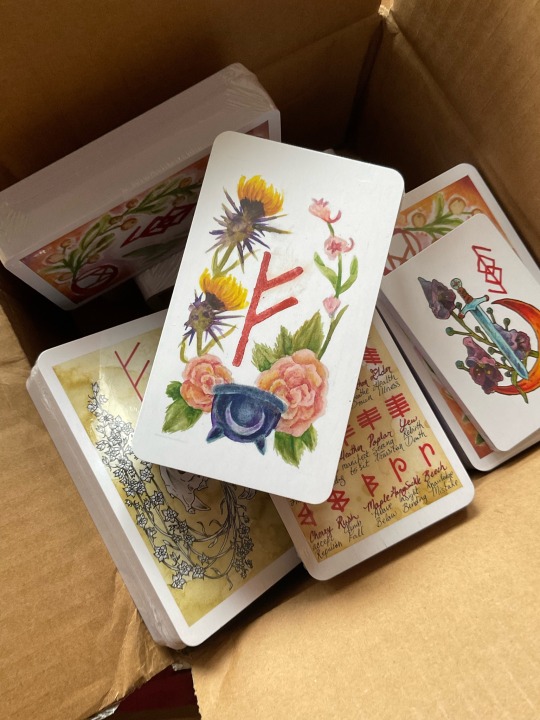
Rune and Ogham decks will be available at market of magic , October 28 and 29th in Lebanon, Pennsylvania at the Lebanon expo center.
#pagan#norse pagan#paganism#pagan artist#pagan art#runes#supernatural#Ogham#Druid#Druidic#Irish pagan
64 notes
·
View notes
Text
I love people talking about how the alt right will yoink well intentioned budding neo pagans and new agers into their folds but at the same time with the way TikTok refuses to accept nuance, I'm afraid this will lead people to automatically equate being pagan with being a Nazi. I pray to Artemis. This does not make me a Nazi. And I'd hate to see the day TikTok decides to do their black and white thinking again when more people, typically those outside of paganism, will hate pagans assuming we are all just racist. And this may also chase off anyone interested in paganism which is unfortunate.
If you ever worry about falling into white supremacy by bad actors trying to fool you, always look into their sources. Look into the history, search their backgrounds and look to trusted members of the community to ask. I can help but I'm not on much anymore since my daughter was born. But there's plenty, please reach out.
#wicca#pagan#paganism#witchblr#paganblr#wiccan#new age#occult#celtic#irish pagan#kemetic pagan#Egyptian pagan#norse#norse pagan#heathen#heathenism#slavic paganism
159 notes
·
View notes
Text
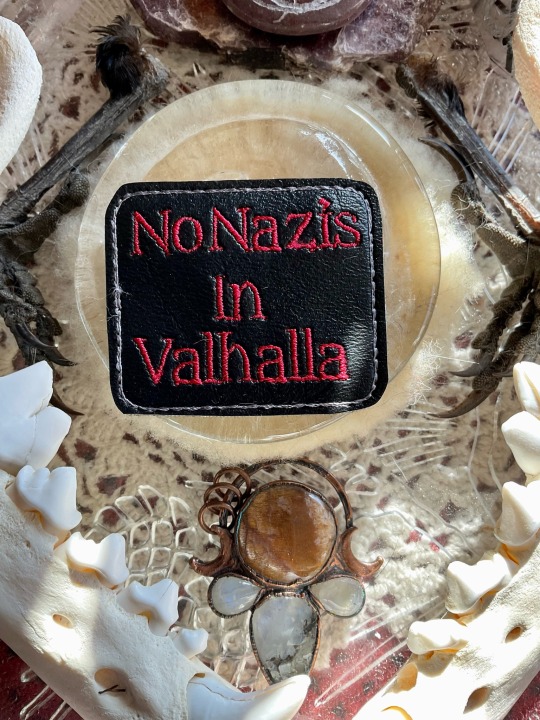

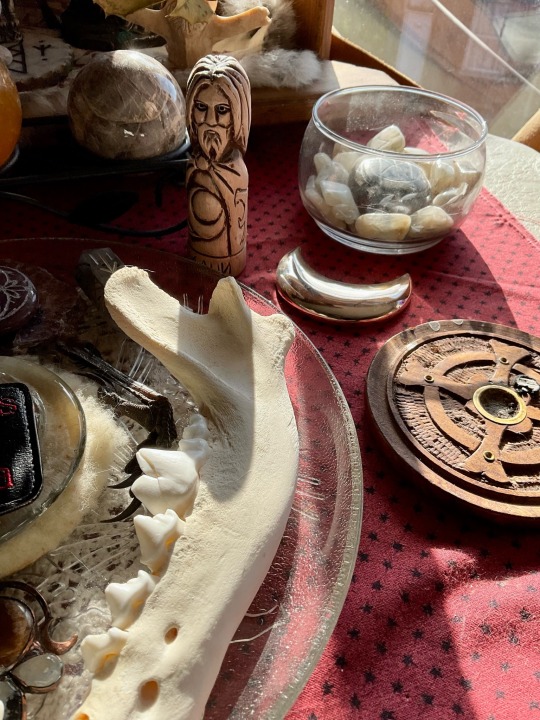
Sunny days
32 notes
·
View notes
Text
dagda e offering
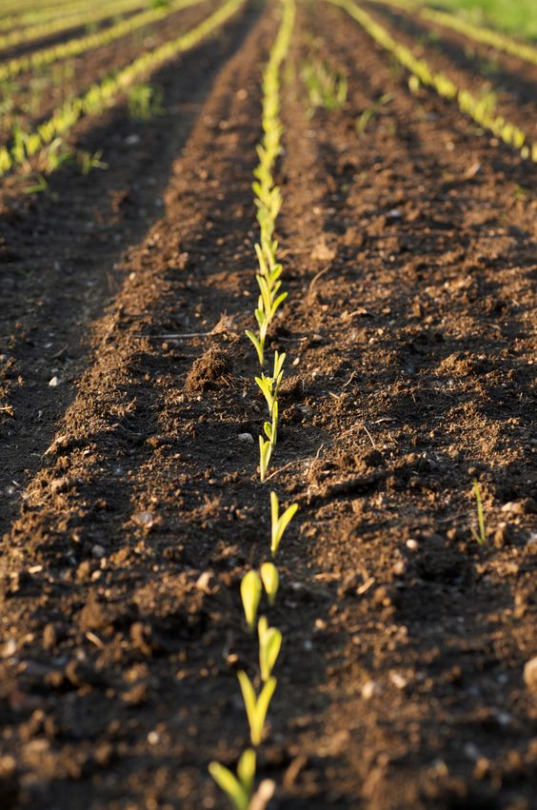
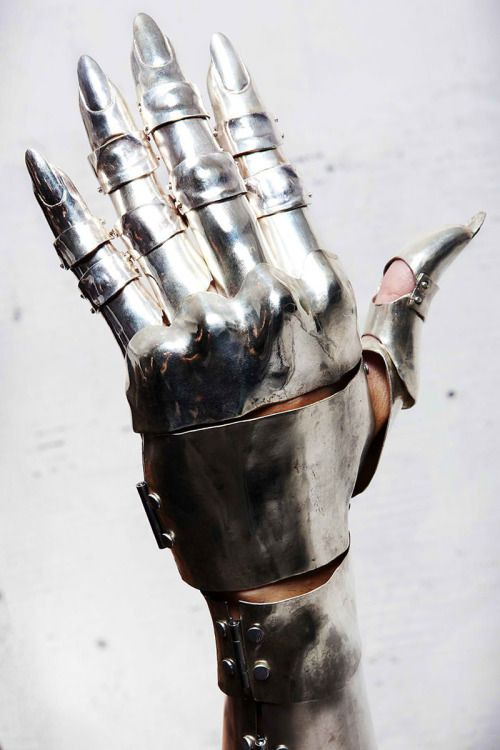
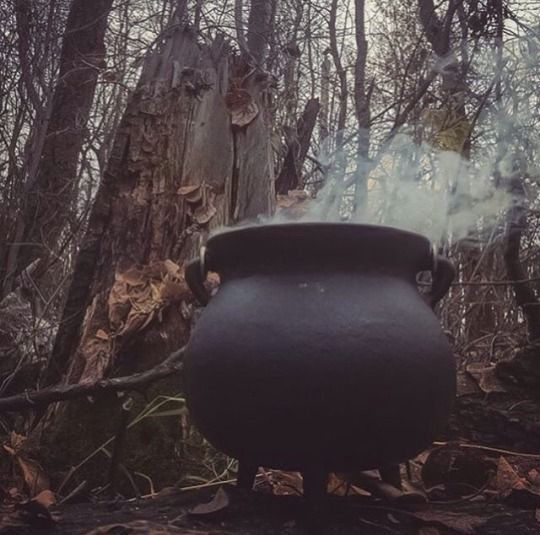
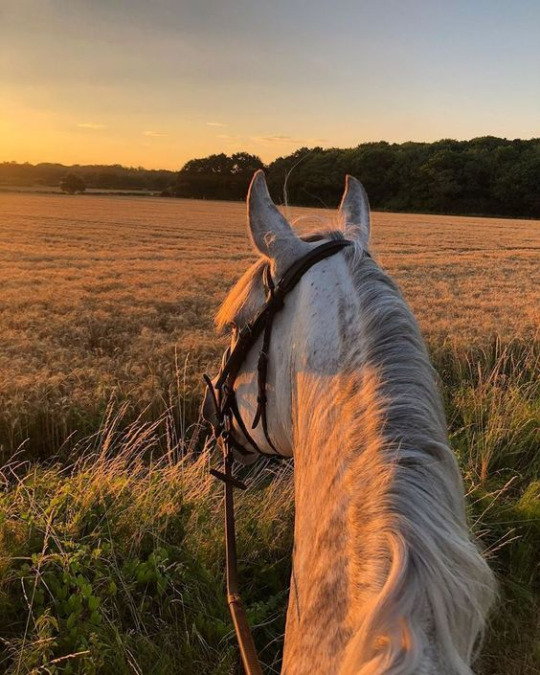




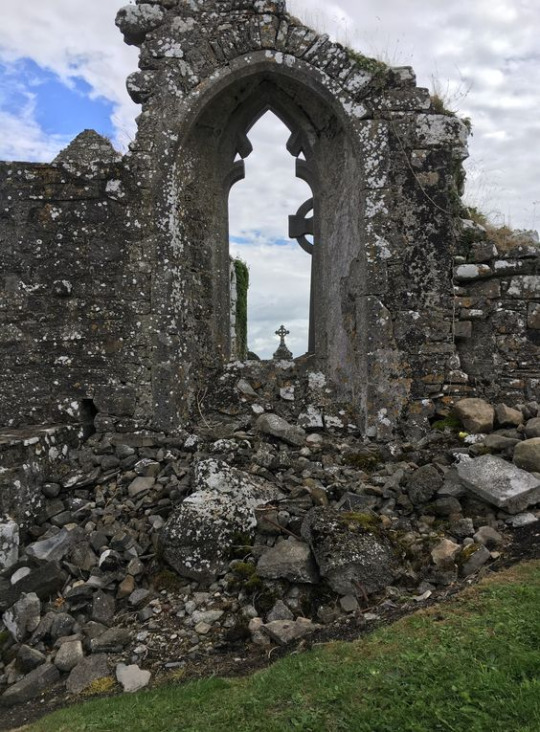
8 notes
·
View notes
Text
it’s The Morrigan devotional hour (that would be a great variety show) so I thought I’d talk a little bit about how my relationship with Her came to be
I had spent well over a month feeling like I had someone calling out to me. this feeling mostly came in the form of a cold, feminine hand on my shoulder, steering me. I thought a lot about the circumstances in my current life that could be signs or connections. I did a lot of research on different deities I thought it might be.
now I have to be embarrassingly honest here- many times in my contemplation/research, I thought “The Morrigan? no, it can’t be Her. next.” this came from a couple places- a) I’m deeply Irish and felt it very cliché. b) so, so many people devote themselves to The Morrigan that I wrote it off, saying that I probably just convinced myself it was Her because She’s popular. c) I was genuinely afraid. hey, I love Her, but She’s terrifying!
obviously blind to the real answer, my search for answers kept on and got me nowhere. eventually I was desperate, begging “I can feel You here, who ARE You? PLEASE. HELP ME.”
the next day, I walked outside and there was a crow feather, planted directly upright in the soil, at the base of the tree I give offerings to. as I walked towards the feather, knowing that that was a sign, a squirrel started straight up /pelting/ me with acorns. throwing them at my head. as if to say “you doubt it’s Me? who else could it even be at this point?”
I ran inside to do a tarot reading (after collecting the feather and all 9 acorns), hoping to get a confirmation, and every single answer pointed to yes, it was Her. I was overcome with full-body joy (which truly was a feat considering how tired and sad I was) and immediately laid myself down at Her feet. I also apologized profusely for my refusal to believe or accept it was Her (I don’t think She needed apologies, She got what She needed with the acorns pelted at my head).
we’ve been working together ever since. I have never felt more connected- apart from physically being there, the most spiritual experience I’ve ever had- to my roots in Ireland. I have not felt this strong in a long time. She keeps me in check and encourages me to go forward when I fear I cannot go on. She is building me- and helping me build myself- to be a better version of me. She has been with me a lot longer than I’ve known Her presence in my life; I think She just got tired of being in the background.
and that’s my slightly comical, mostly embarrassing story of how I finally came to accept (and adore) The Morrigan’s presence in my life. we’re an odd but oddly perfect pairing.
and today, for Her, I’m gonna start re-learning Gaeilge (the Irish language) because I have forgotten nearly everything I used to know 😅
#the wolf speaks#the morrigan#devotional writing#celtic pagan#celtic paganism#the morrigan deity#the morrigan devotee#the morrigan devotion#the morrigan worship#irish pagan#irish paganism
32 notes
·
View notes
Text
can anyone recommend a good book or two about the Filidh? or anything to do with imbas forosnai
ik there's a million articles online but I can't learn stuff reading on a screen, it just doesn't stick in my head as well
14 notes
·
View notes
Text

determined. cunning. fierce.
The Morrigan hunts alongside you.
devotional piece of artwork for The Morrigan! my love for Her is unyielding and explosive, and I hope to have gotten that across in this piece.
my commissions are open, please shoot me a message if you’re interested!
#the wolf speaks#the wolf creates#devotional art#the morrigan worship#the morrigan devotion#the morrigan devotee#the morrigan#the morrigan deity#celtic polytheism#celtic pagan#celtic paganism#irish paganism#irish pagan#irish polytheism#art#art on tumblr#artists on tumblr#artists of tumblr#artblr#digital art#procreate#commissions open
18 notes
·
View notes
Text
‿︵‿︵୨˚̣̣̣͙୧ - 🔥 - ୨˚̣̣̣͙୧‿︵‿︵
Brigid of Éire
I sing your name in praise
I ask for your light during my life’s new era
From my hearts hearth, may your flame blaze
*+:。.。 go raibh maith agat 。.。:+*
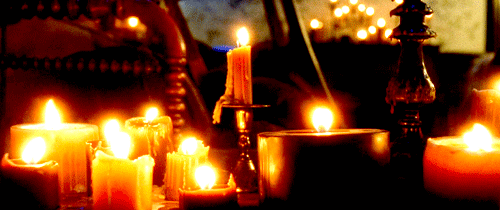
#brigid devotee#devotional blog#I timed this perfectly to sunrise :)#poetry#poem#irish mythology#irish pagan#irish paganism#brigid deity#goddess brigid#saint brigid#brigid#brighid deity#brighid#prayer#pagan prayer#irish polytheism#gaelpol#omnist#hearth witch#fire goddess#goddess#digital offering#Brigid prayer#brigid goddess#tuatha de danann
6 notes
·
View notes
Note
I saw someone say that practicing Irish Paganism is impossible because Druid bloodlines were not maintained due to intermixing with non-Druids and converting to Christianity. How does one respond to this?
Well... this is semi-addressing two different things so let me separate them and respond to each.
First, druids were the priestly class of early Irish (and other pan-celtic) society, but everyone in early irish society would have been considered an Irish pagan. Everyone from the warrior class, farming class, skilled class (and probably SOME of the slave class as well) would have believed in the gods, spirits, etc. and lived their lives accordingly.
Second, in early Ireland being a druid WAS hereditary. I've never found clear information about if early Irish society worked similarly to the Hindu class system, where if your father was a brahma YOU WERE GOING TO BE A BRAHMA SO HELP YOU! or if having a father (or generally a parent since we know some women were druids) qualified you to follow the craft but didn't necessarily mean you HAD to.
The part about intermixing....... honestly, it just sounds kinda racist? I've never heard anything prohibiting druids from having children with someone who wasn't a druid, or even of the ruling class. Irish class laws that we have offer more flexibility in class mobility and marriage between partners of different social standing (for antiquity).
This brings me to a small pet peeve of mine which is that.... 90% of the people who self identify as a 'druid'.... they're not... they're just not... theoretically a modern druid would be someone in a priestly/clergy capacity ONLY in a Pan-Celtic tradition (looking at you ADF). Your average person just practicing Irish paganism wouldn't qualify as a druid even in this very updated modern sense, I wouldn't even qualify. Now in the most traditional sense, no one could qualify as a druid because they haven't participated in the years of rigorous study under the tutelage of a druid trained in the same fashion previously. You can find some folks out there that claim they are just that, having had the traditions passed down inside their families secretly for all these years... but to say I'm skeptical is a massive understatement.
I hope this clears things up, I tried not to get too long winded or sidetracked. Please feel free to ask any other questions you have or if you need anything here clarified/elaborated on!
#irish#irish paganism#irish pagan#irish polytheist#irish polytheism#celtic paganism#celtic pagan#druids#druid#ask#anon#blackcrowing
32 notes
·
View notes
Text
The Evil Eye in Irish Folklore
In pre-modern Ireland, like in many other cultures, the power of the gaze held immense significance. Practices and customs associated with the evil eye were passed down through generations, and many were collected in The School's Collection in the 1930s.
The School's Collection has proven to be an indispensable asset in my exploration of Irish paganism. However, it can be quite a task to read, classify, and integrate all the materials on any given topic. The following are my notes from what I've encountered searching the records, but I hope they'll prove useful to others.
What is the evil eye in the Irish folk tradition?
In Irish folk traditions, the evil eye was believed to possess an otherworldly power, capable of causing illness, misfortune, and even death.
It was believed that those who possessed the evil eye could knowingly or unknowingly project this baneful magic onto others simply through their gaze. The evil eye could affect many aspects of life including people, livestock, and crops.
This ability is often referred to as "overlooking" or "blinking" in the Duchas records and the terms can be used interchangeably.
In this locality, long ago, it was a common belief, that if people met with any reverses, or suffered any loss of property, the misfortune was due to "the evil-eye," meaning that some person supposed to have an evil eye "overlooked" their property, and that was considered the reason for the particular piece of ill-luck. If a person with an "evil-eye" took particular notice of any animal, for example, the animal would either do himself an injury or pine away gradually. Usually, the possessors of the "evil eye" were not aware that they had such a particular kind of eye, or were connected with other people's misfortunes. Duchas.ie
What causes the evil eye?
There are numerous things that could cause someone to be born with the evil eye (people are generally considered to be born with it rather than acquiring it later in life). Some of the reasons recorded are:
Having the surname Marrinan 1, 2, 3 or Kingfisher 4.
Being born on Whit Sunday (the seventh Sunday after Easter) 5, 6 or on June 29th 7
Babies returning to breastfeeding after being weaned 8, 9
Babies seeing their baptismal towel before it was washed 10
Your Godparents omitting a word during your baptism 11
Prevention of the evil eye
To protect themselves from the ill effects of being overlooked, people developed customs and rituals, the most popular of which included:
Waiting to light their fires on May Day so that the evil eye did not take their luck and profit for the coming year 12
Placing St. Brigid's crosses around the home (and outhouses) 13, 14
Nailing a donkey's shoe to the threshold of the home (this also helped to guard against the Good Neighbors) 15
For animals, placing a Gauldoron Garragh knot on their back would provide protection 16
Using red items (usually cloth) to distract the evil eye 17, 18, 19, 20, 21
Asking God to bless the person or thing being talked about after you suspect an overlooker (a common term for those who possess the evil eye) has spoken about them 22, 23, 24, 25
Jumping through the flames at midsummer 5
Cures for the evil eye
If all your preventative measures failed, there were several cures that could be tried.
For a baby born on Whit Sunday or another unlucky day, the cure was to place green sod over them three times 4, 6, 8
A cure commonly used with animals thought to have been overlooked was to write the overlooker's name (if known) or the entire alphabet (if the overlooker's name is unknown) onto a piece of paper or other burnable material and burn it under the animal's nose so that it inhales the smoke 26, 27, 28, 29, 30
A piece of thatch from the overlooker's house, or even a piece of their clothing can also be burned under an animal or person's nose (or burned and then the ashes put into a drink) to cure the evil eye 27, 28, 29
Water from a place where three townslands meet can cure when sprinkled on the overlooked animal or person, but the person who gets the water must not speak to anyone on their way there and back 30
Forge water can also be used in the same way 31
While the belief in the evil eye has faded over time, the echoes of these traditions can still be felt in Irish culture today. These records serve as a reminder of the deep-rooted folklore and superstitions that once shaped the lives of the Irish people and can help inform our Irish pagan practices today.
#the evil eye#paganism#irish paganism#irish pagan#irish folklore#celtic pagan#celtic paganism#celtic folklore#folk magic
155 notes
·
View notes
Text
Sam's Masterlist of Beginner Resources

These are some of my favorite books, podcasts, and blogs that can help you develop your spiritual practice even if you have zero previous knowledge. All of these resources are approachable enough for total beginners, but I also recommend them for more advanced practitioners who want to brush up on the basics. Some books are listed in multiple categories because they cover multiple topics.
This list will be updated continuously as I find new resources that I want to recommend.
Secular Witchcraft (witchcraft that is not part of an established religious or spiritual tradition)
Witchcraft for Everyone by Sam Wise
A Witch's Guide to Spellcraft by Althaea Sebastiani
"Witchcraft for Skeptics | Science and Theory Behind Magick" by Jessi Huntenburg on YouTube
A Green Witch’s Cupboard by Deborah J. Martin
By Rust of Nail & Prick of Thorn by Althaea Sebastiani (this book is about protection magic specifically)
Witchcraft Traditions (witchcraft that is part of an established religion or spiritual path)
Wicca For Beginners by Thea Sabin
Wicca: A Guide for the Solitary Practitioner by Scott Cunningham
Reclaiming Witchcraft by Irisanya Moon
The Spiral Dance by Starhawk (written by a founder of Reclaiming, but also contains elements of Wicca and Feri)
Betwixt & Between by Storm Faerywolf (about the Feri tradition)
Witchcraft in History and Culture
Waking the Witch by Pam Grossman
Witches, Sluts, Feminists by Kristen J. Sollee
Witches, Midwives, and Nurses by Barbara Ehrenreich and Deidre English
Paganism
Wicca For Beginners by Thea Sabin
Wicca: A Guide for the Solitary Practitioner by Scott Cunningham
The Spiral Dance by Starhawk (written by a founder of Reclaiming, but also contains elements of Wicca and Feri)
Irish Paganism: Reconstructing Irish Polytheism by Morgan Daimler
Morgan Daimler's YouTube channel (Irish paganism and Fairy lore)
Lora O'Brien's YouTube channel (Irish paganism)
The Irish Pagan School
Temple of the Cosmos by Jeremy Naydler, Ph.D. (Kemetic paganism)
The Way of Fire and Ice by Ryan Smith (Norse Heathenry)
On Black Wings: A Site for Fire & Ice Heathen spirituality and practice: https://www.onblackwings.com/
Skald's Keep: https://skaldskeep.com/ (Norse Heathenry) (on tumblr as @skaldish)
North of Annwyn: https://northofannwn.wixsite.com/home (author is Heathen but posts about magic and paganism more generally; author is currently on hiatus) (on tumblr as @north-of-annwn)
American Folk Magic
New World Witchery podcast
Southern Cunning by Aaron Oberon (Southern folkloric witchcraft)
Roots, Branches & Spirits by H. Byron Ballard (Appalachian folk magic)
Sticks, Stones, Roots, and Bones by Stephanie Rose Bird (Hoodoo, African-American magic)
Jambalaya by Luisah Teish (New Orleans Voodoo and African-American women's spirituality)
Divination
Kitchen Table Tarot by Melissa Cynova
Astrology for Real Life by Theresa Reed
Fifty-four Devils: The Art & Folklore of Fortune-telling with Playing Cards by Cory Thomas Hutcheson
Religion, Spirituality, and Politics
"Rethinking How Paganism Engages Culture" by Sam Wise (blog post: https://www.samwisethewitch.com/post/rethinking-how-paganism-engages-culture)
Bringing Race to the Table edited by Crystal Blanton, Taylor Ellwood, and Brandy Williams
"Witchcraft PSA: The Chakras & Cultural Appropriation" by Anthony the Witch on Tumblr (https://anthonythewitch.tumblr.com/post/187293358858/witchcraft-psa-the-chakras-cultural)
Bright-sided by Barbara Ehrenreich (deals with toxic positivity)
McMindfulness by Ronald Purser (this one is a little bit dense but has a very important message about how American mindfulness culture misappropriates Buddhist practices)
#long post#baby witch#baby witch bootcamp#books#book rec#book review#book recommendations#witch#witchcraft#witchblr#folk magic#southern folk magic#hoodoo#voodoo#heathen#heathenry#norse pagan#norse paganism#irish pagan#irish paganism#kemetic polytheism#kemetic paganism#wicca#wiccan#reclaiming#feri#my writing#mine
253 notes
·
View notes